
D365 + Power Platform UG 🇬🇧
Workloads in the Microsoft Cloud are increasingly being built to (a) integrate with one another, (b) integrate with the broader enterprise application and data system, and (c) make use of common building blocks such as core platform services, Azure data, application, and integration services, and Power Platform. On the latter, the most successful organizations are now using Power Platform to build ambitious, high value solutions. In other words, solutions are being tied together rather than architected in isolation, and this is generating vast datasets built as "single sources of truth".
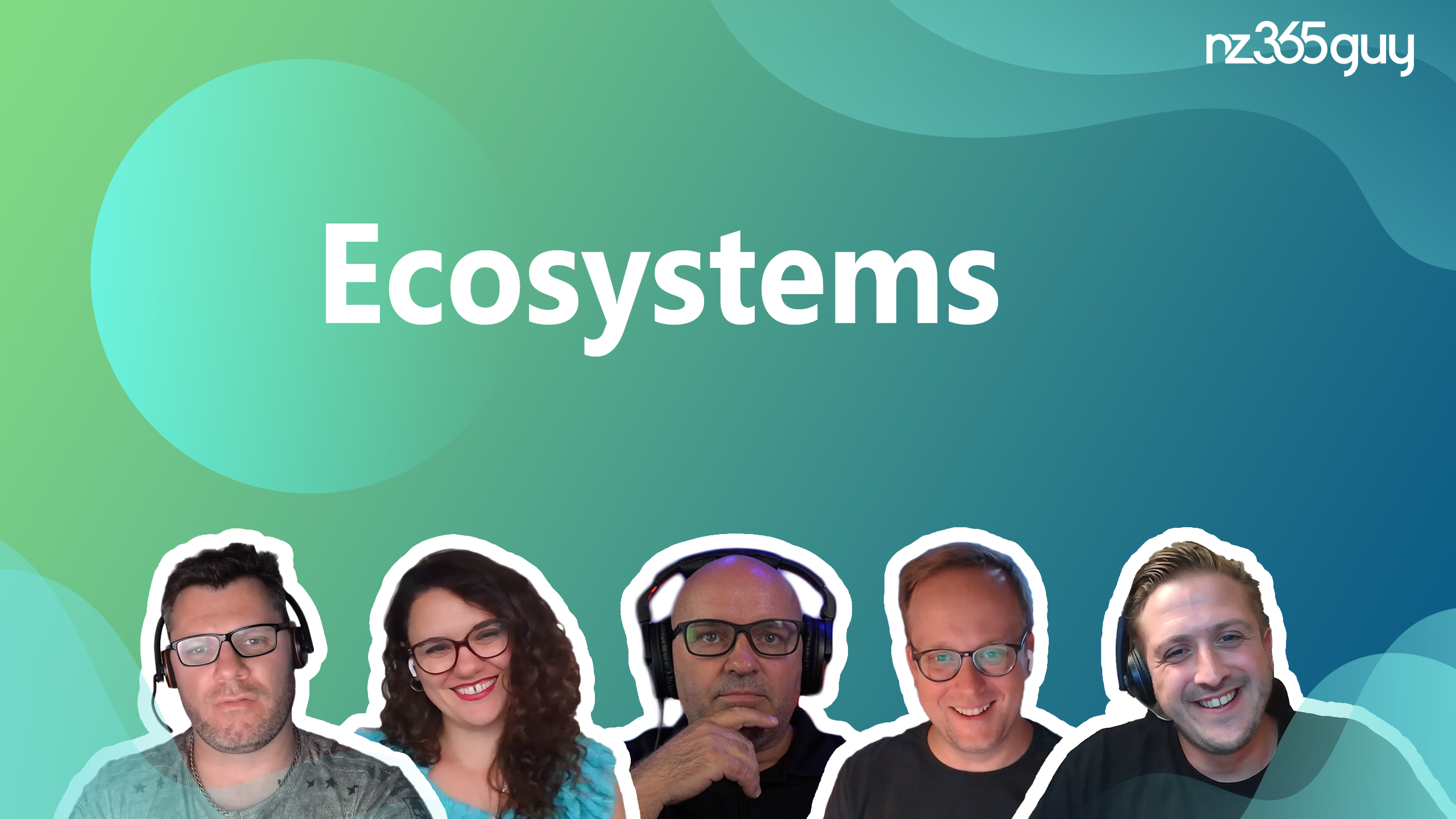
Premiering the “Ecosystems” Podcast
Mark Smith, Ana Demeny, Andrew Welch, Chris Huntingford and William Dorrington launch the Ecosystems podcast. We delved into the Microsoft Cloud Ecosystem and discussed topics from missed innovation opportunities to the significance of embracing technological advancements. The conversation provides insights into the evolving nature of technology adoption, the potential consequences of not staying current, and the varying perspectives on navigating the complexities of the technological landscape.

Building future-ready cloud ecosystems for the age of AI
Discussing AI in recent months I have often thought about the fable of the boiled frog, whereby a frog placed in boiling water jumps out, but a frog placed in warm water that is gradually heated lacks awareness of his impending demise until it is too late. Or, as I continue to remind the CIOs with whom I work closely, the grace period for organizations to get their act together and position themselves for the next wave is growing much shorter, the margin for error much more narrow.

Azure Integration Congress 🇳🇱
Organizations using Microsoft Cloud are integrating their workloads with each other, broader enterprise applications, and common building blocks like core platform services, integration services, data solutions, and Power Platform. Successful organizations are using Power Platform to build high-value solutions that tie different solutions together, generating large datasets as “single sources of truth”. This session will explore real-world examples of how organizations have integrated their workloads into an ecosystem, best practices, and lessons learned, inspiring attendees to think like the world’s boldest solution and enterprise architects.

Keynote @ HSO Tech Day 🇳🇱
I have come to understand strategic thinking as more art than science. Strategy is surely informed in part by data, but I find that our society in general and the technology industry specifically too often confuse data and wisdom, that we foolishly (though understandably) seek heuristics or processes so that we can turn the art of strategic thinking into a game of color by numbers so simple that anyone can do it. When it comes to strategic thinking, better that we seek methods of framing our thoughts rather than shortcuts to the answers themselves. This session offers practical approaches to injecting strategy into your organization’s Microsoft Cloud journey, indeed, a selection of the same approaches I take with my clients. We explore a wide range of topics, including the impact of AI on the strategic landscape, how organizations have ever-decreasing time to absorb waves of innovation into their operating models, the transition from activity-based to system-based value, and how governance fits. We’ll then investigate a model for weaving strategic intent into the ongoing cloud journey, and explore industry-specific ecosystem maps that illustrate how other organizations have found success doing this.

D365 + Power Platform UG 🇬🇧
Workloads in the Microsoft Cloud are increasingly being built to (a) integrate with one another, (b) integrate with the broader enterprise application and data system, and (c) make use of common building blocks such as core platform services, Azure data, application, and integration services, and Power Platform. On the latter, the most successful organizations are now using Power Platform to build ambitious, high value solutions. In other words, solutions are being tied together rather than architected in isolation, and this is generating vast datasets built as "single sources of truth". This session will get you thinking like the world's boldest solution and enterprise architects as we explore real-world examples of how organizations have knitted their workloads together into an ecosystem, best practices for doing so, and lessons learned along the way.

Dynamics Minds 🇸🇮
Power Platform solutions are increasingly being built to integrate with one another and with the larger enterprise application and data ecosystem, and the most successful organizations are using Power Platform to build ambitious, high-value solutions. In other words, solutions are being tied together rather than architected in isolation, and this is generating vast datasets built as "single sources of truth". This session will get you thinking like the world's boldest solution and enterprise architects as we explore real-world examples of how organizations have knitted their workloads together into an ecosystem, best practices for doing so, and lessons learned along the way.

Iberian Summit 🇵🇹
Power Platform solutions are increasingly being built to integrate with one another and with the larger enterprise application and data ecosystem, and the most successful organizations are using Power Platform to build ambitious, high-value solutions. In other words, solutions are being tied together rather than architected in isolation, and this is generating vast datasets built as "single sources of truth". This session will get you thinking like the world's boldest solution and enterprise architects as we explore real-world examples of how organizations have knitted their workloads together into an ecosystem, best practices for doing so, and lessons learned along the way.
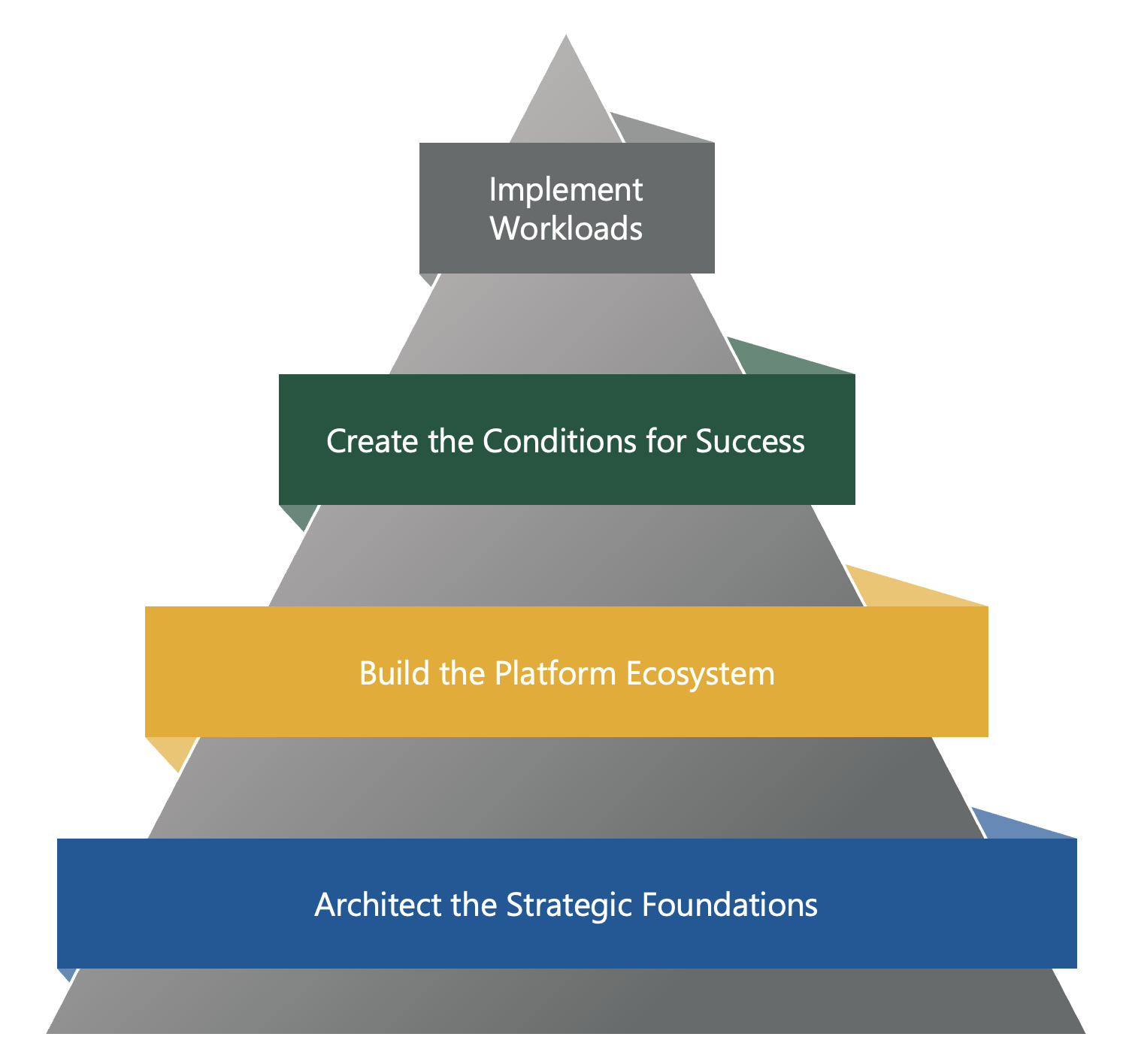
Understanding cloud ecosystem value and architecture via a “strategic pyramid”
Let’s consider a model for how organizations should be prioritizing their work and investments in the Microsoft Cloud. The imperative here could not be greater. Technological advancements are now moving on timelines that in some instances can be measured in weeks. Not months. Not years. But weeks. This both accelerates and is accelerated by the shift to system-based value. In other words, getting the platform ecosystem right in an organization is both necessary to creating the greatest likelihood that the organization can absorb rapid innovation, whilst simultaneously creating the conditions that drive that rapid innovation forward. But too many organizations have misallocated their focus up and down the value chain, prioritizing workload implementation either at the expense of or out of ignorance to architecting strategic foundations, building the platform ecosystem, and creating the conditions for success. That’s a bit esoteric, so let’s visualize this phenomenon as the “strategic pyramid”…

Power Platform School 🇬🇧
Explore how to adopt the Power Platform at scale across a large organization, and discuss how administrators, architects, and program / project managers can govern, manage, and operate the Power Platform in service to their business-focused customers. The discussion will include an overview of the current state of the platform, and dive into several of the tools and techniques used to manage and govern to platform, including the Power Platform Adoption Framework and the Center of Excellence (CoE) model.
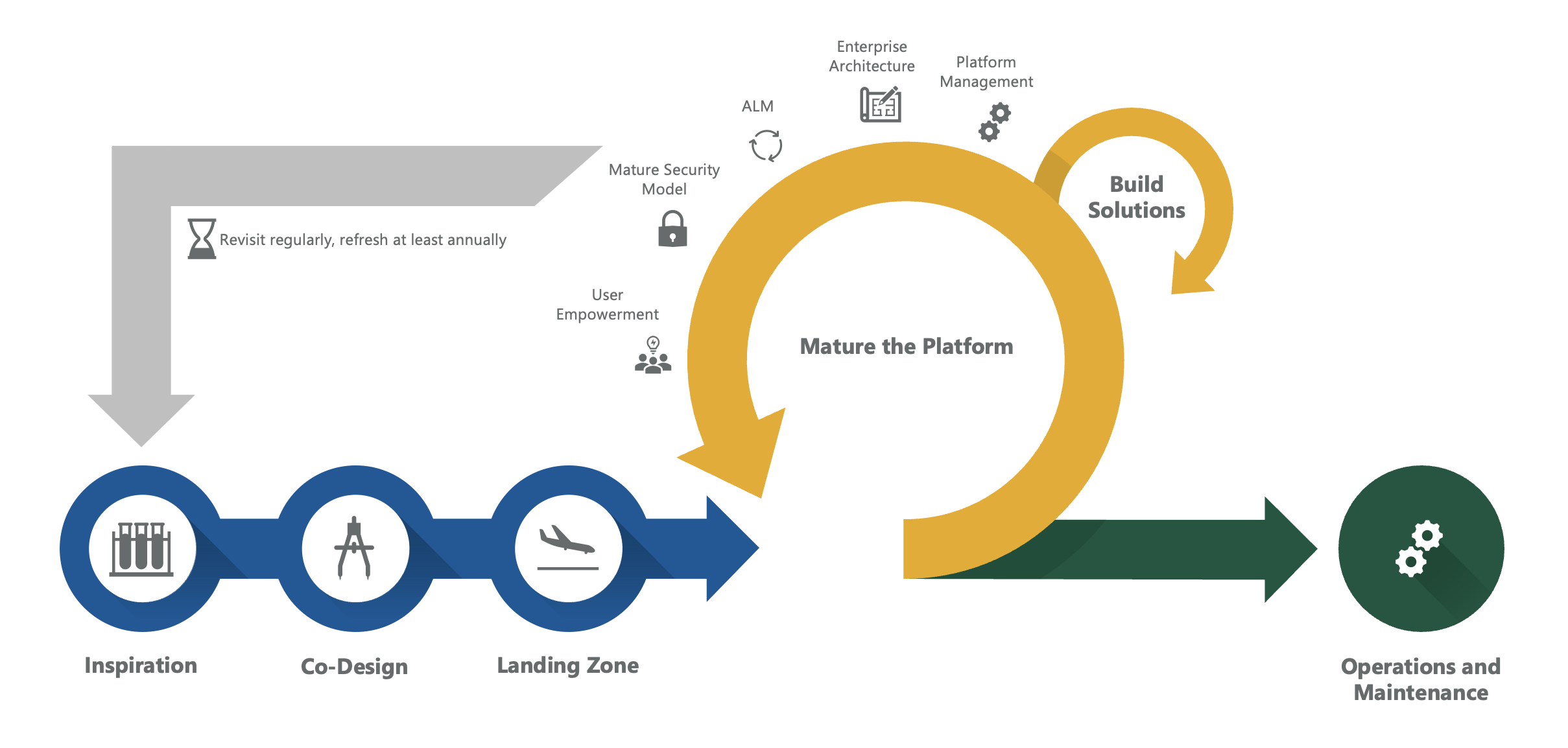
Strategic thinking for the Microsoft Cloud
I have come to understand strategic thinking as more art than science. Strategy is surely informed in part by data, but I find that our society in general and the technology industry specifically too often confuse data and wisdom, that we foolishly (though understandably) seek heuristics or processes so that we can turn the art of strategic thinking into a game of color by numbers so simple that anyone can do it. When it comes to strategic thinking, better that we seek methods of framing our thoughts rather than shortcuts to the answers themselves. So in this piece I have sought to offer practical approaches to injecting strategy into your organization’s Cloud journey, indeed, a selection of the same approaches I take with my clients.

Tech Innovation Day 🇳🇱
I have come to understand strategic thinking as more art than science. Strategy is surely informed in part by data, but I find that our society in general and the technology industry specifically too often confuse data and wisdom, that we foolishly (though understandably) seek heuristics or processes so that we can turn the art of strategic thinking into a game of color by numbers so simple that anyone can do it. When it comes to strategic thinking, better that we seek methods of framing our thoughts rather than shortcuts to the answers themselves. This session offered practical approaches to injecting strategy into your organization’s Microsoft Cloud journey, indeed, a selection of the same approaches I take with my clients. We also explored a brief history lesson concerning the Dutch colony of New Amsterdam…
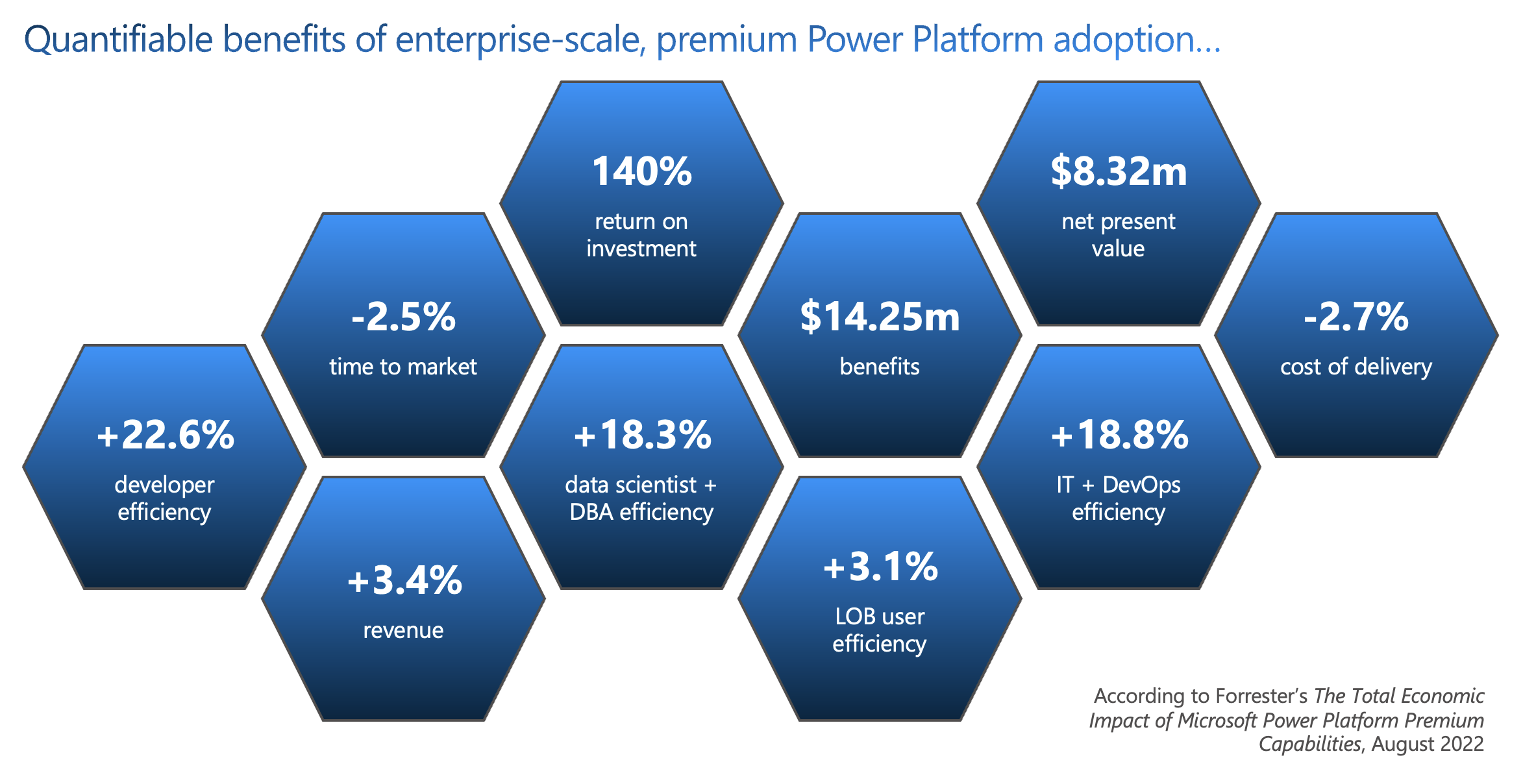
The “Tyranny of the Deliverable”, and other short stories about why you’re struggling to realize big value with Power Platform
Too many organizations are still struggling to go big with Power Platform not because of limitations in technology, but because of their own outmoded ways of doing business, though I know of no other move that IT decision makers in organizations across the economy and around the world can make that is likely to achieve results of this magnitude by—in effect—doing more with less. But the benefits of adoption are often dampened by three big, non-technical reasons that I see so many organizations failing or underperforming in their scaled, enterprise Power Platform adoption.
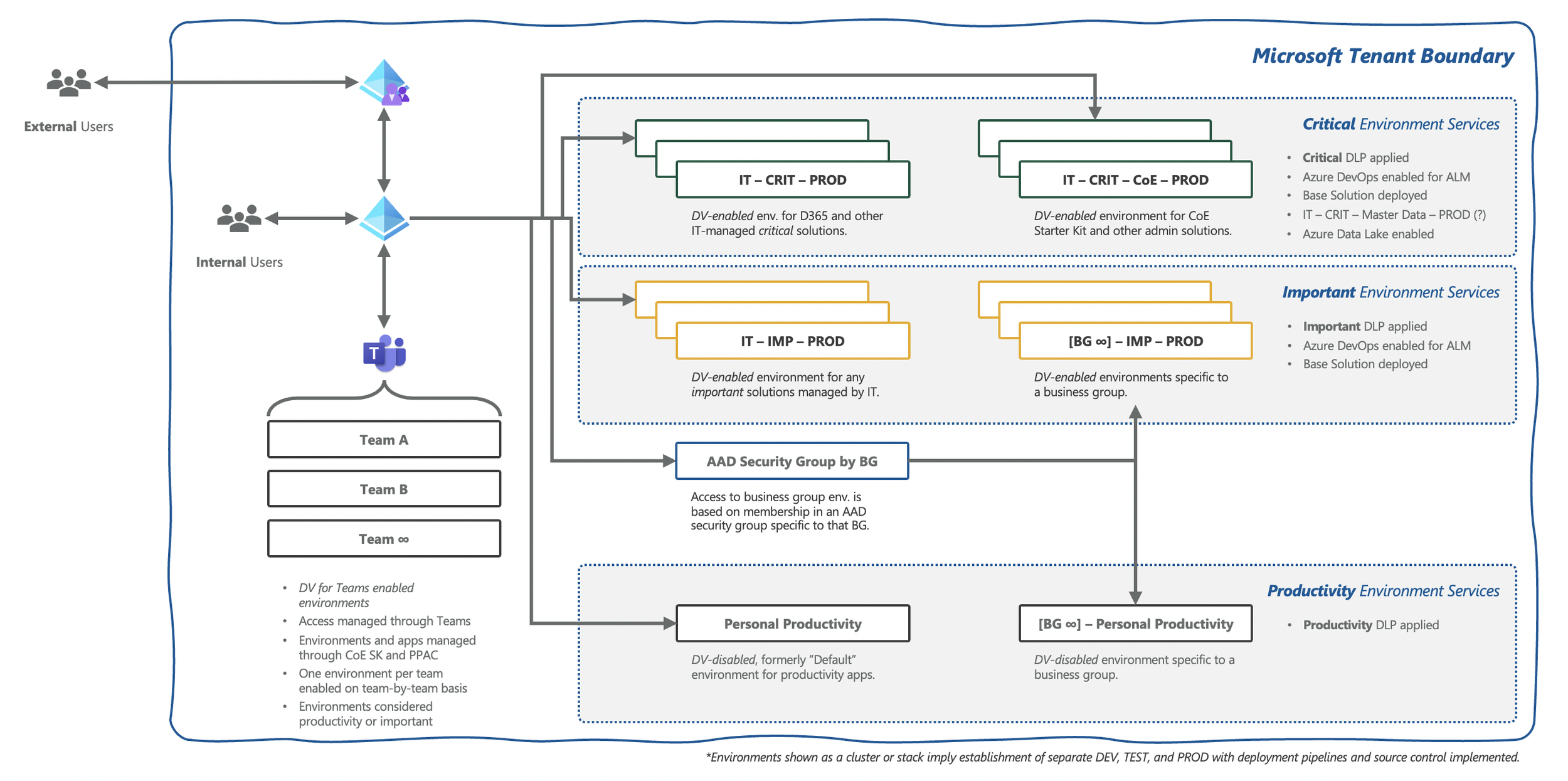
Reference Architecture for the “Landing Zone”, your indispensable foundation for scaling Power Platform
The Power Platform Landing Zone is the beginning of the path to overcoming these barriers. A foundation, if you will, the Landing Zone is the initial technical infrastructure plus governance of that infrastructure that allows an organization to begin “landing” workloads in Power Platform. With that in mind, a while back I set out to create a reference architecture for a Power Platform Landing Zone. In other words, if an organization were to build their Power Platform infrastructure properly, it would look a lot like this reference architecture.
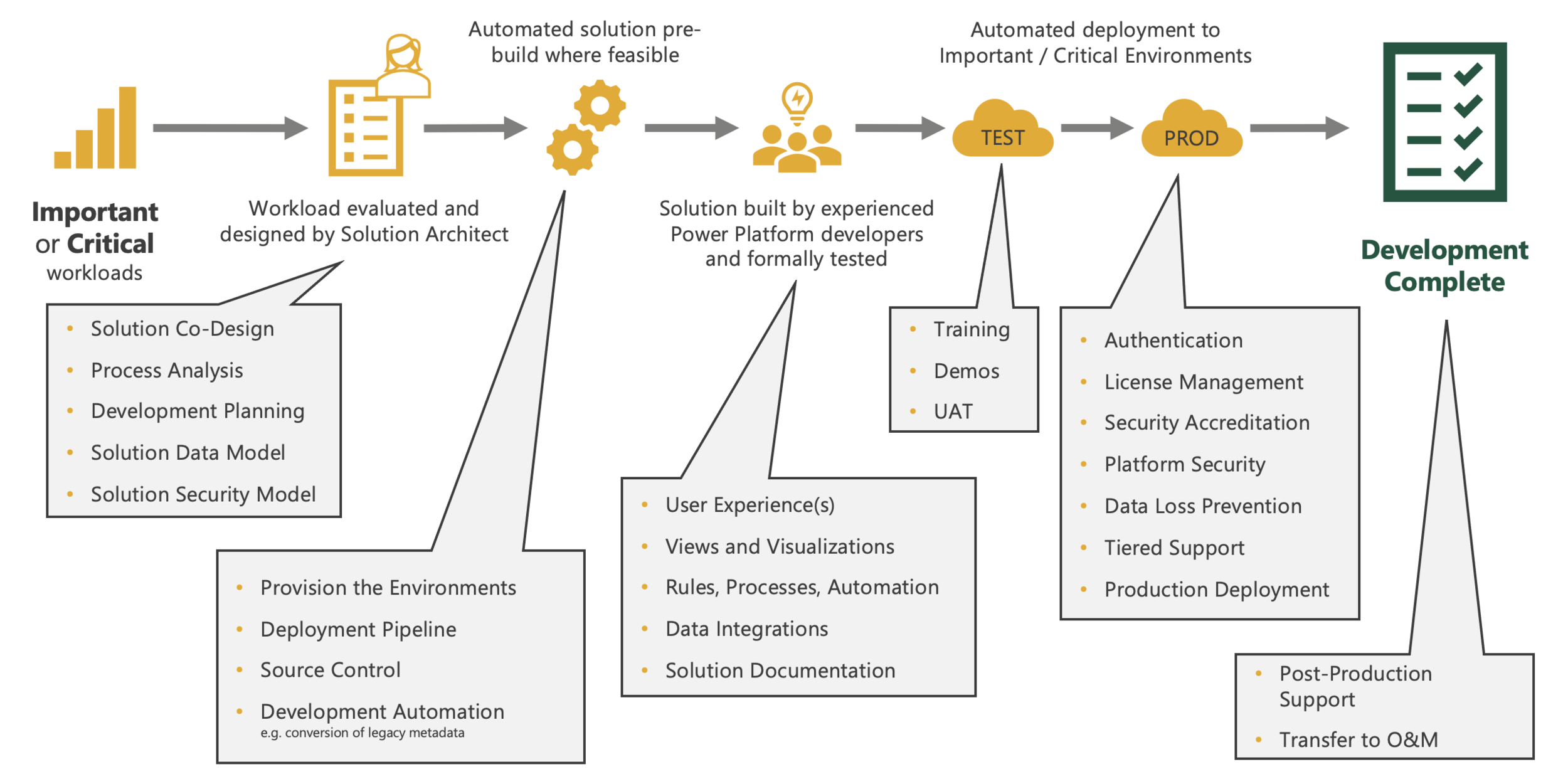
A Common (project) Framework for Solution Development with Power Platform
Here we’ll lay out a common framework (which we’ll refer to as “C-Frame”) for managing Power Platform solution development. This approach is best suited for solutions that classify as important or critical according to the Environmental Architecture Model found in the Power Platform Adoption Framework. If you take nothing else away from this approach, let it be this: Solution development of important and critical workloads produces far better outcomes and is significantly easier to manage when your team has in its own way accounted for all of these project activities.
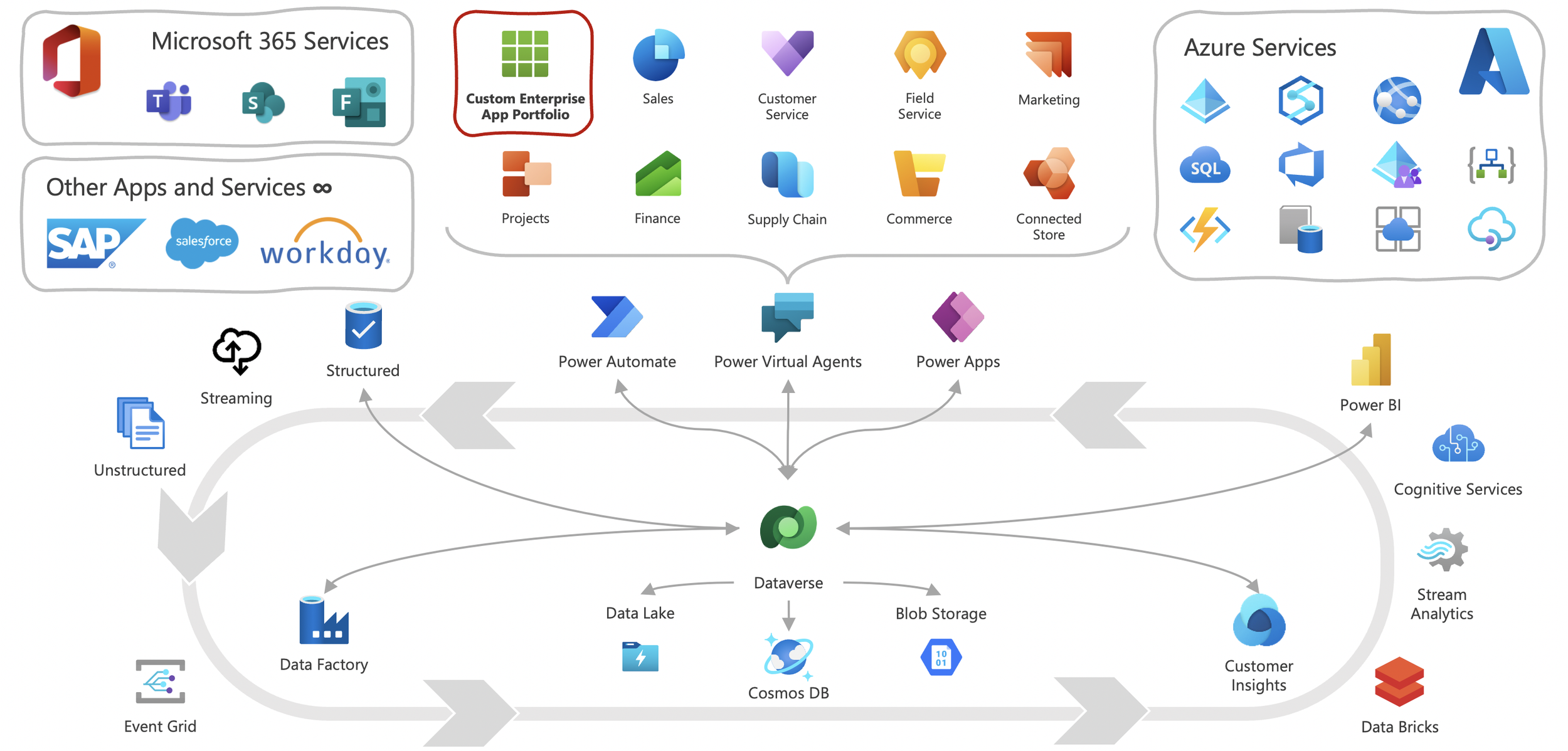
The Cloud Application Platform Era is a seismic, generational transition for cloud technology
We are experiencing a seismic, generational transition in the way that organizations buy, use, and enable their own success via technology. We’re now living in the Cloud Application Platform era, wherein organizations plan more strategically, make technical choices today that reduce the risk of being painted into a corner tomorrow, absorb new requirements rapidly, better fix costs across their ecosystem, and buy down the risk of unknown future needs. That’s what the Cloud Application Platform is all about.
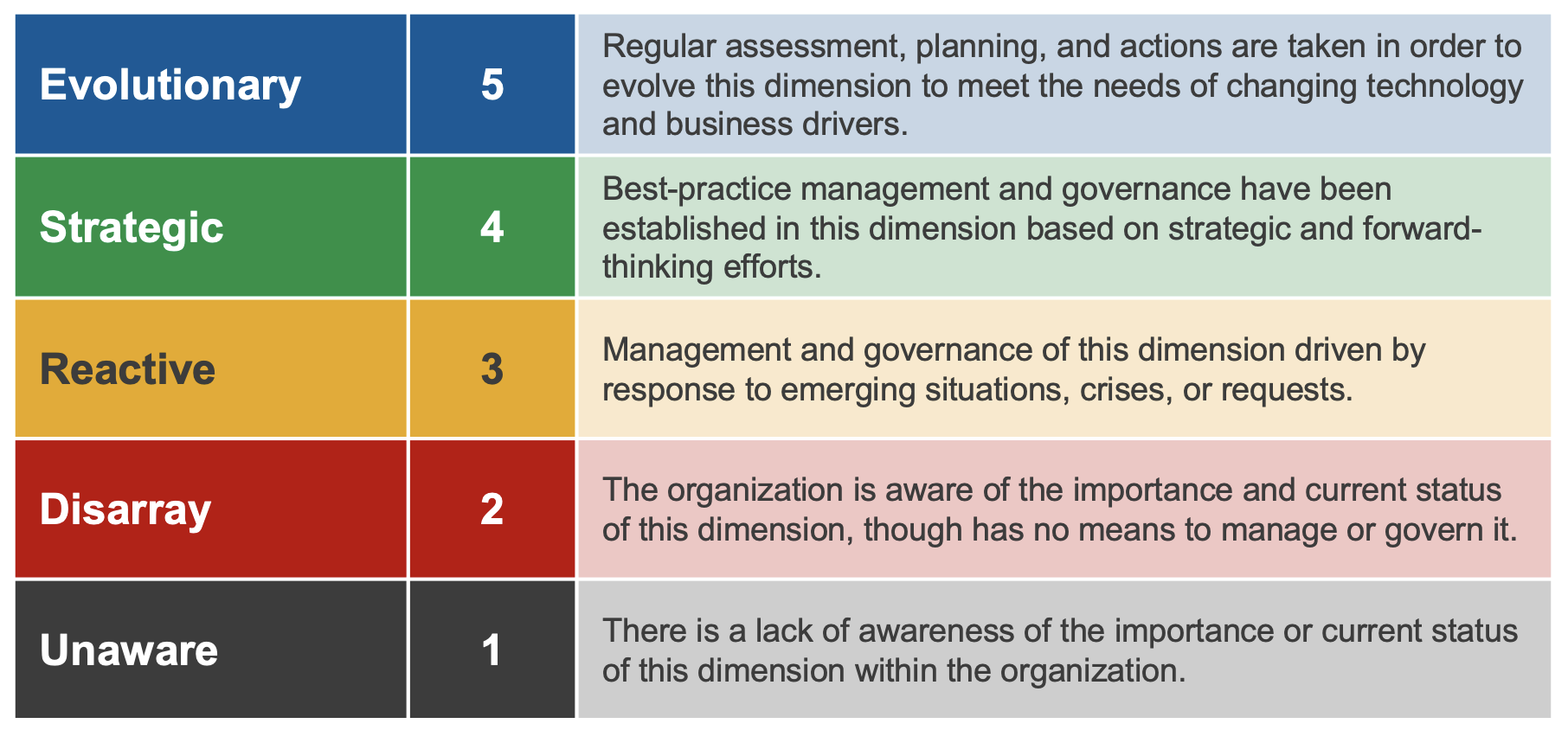
Assessing the maturity of your Power Platform enterprise management and governance
Organizations must continually mature their Power Platform enterprise management in order to unlock the platform’s value as a first-class cloud application platform and scale it over time. The Enterprise Management Maturity Model is the common standard that can be applied across the platform (and extended across the Microsoft Cloud as well) so that we may assess the maturity of enterprise management and governance, evaluate where an organization has made progress and remains less mature, and identify both organizational risk and opportunities to generate new business value.
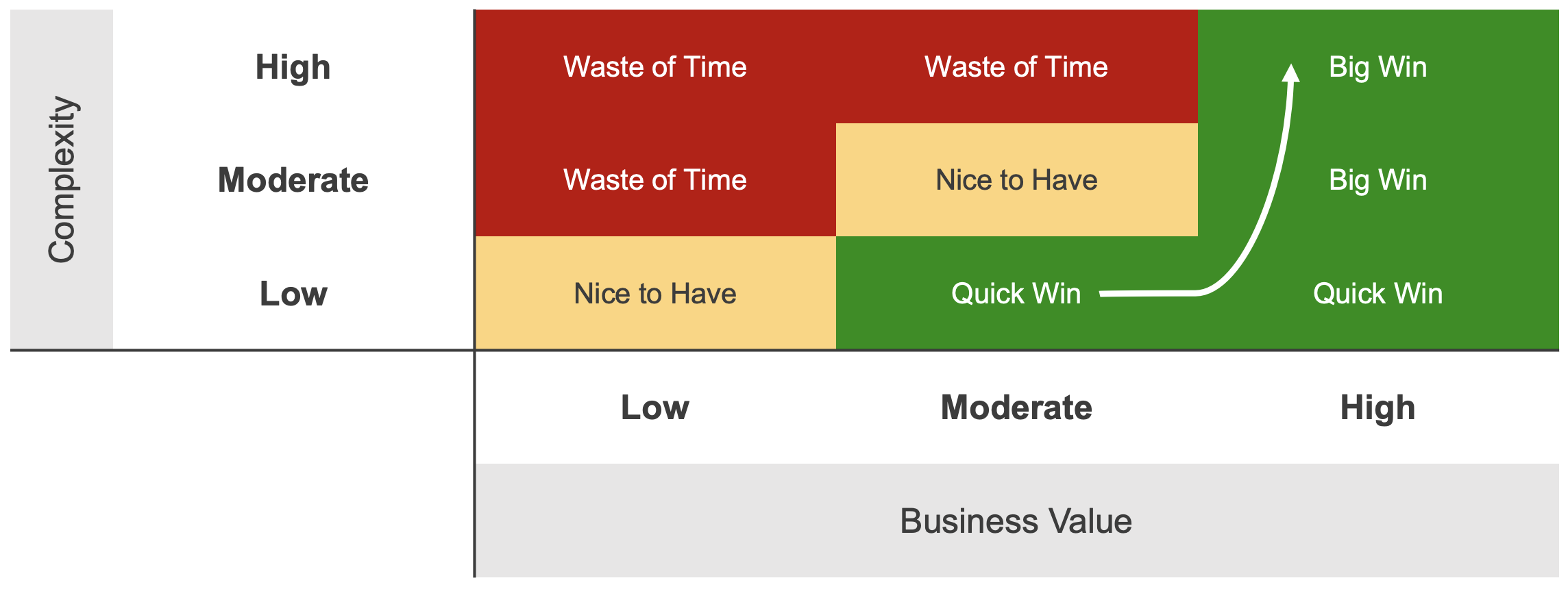
One Thousand Workloads: How your Roadmap maximizes Power Platform investment
The workload Roadmap is an indispensable part of an organization's ongoing Power Platform adoption. It is a prioritized backlog of workloads that are candidates for migration to or new solution builds on the platform. It allows the organization to project the technology's business value over time, and is the core driver of return on investment in the platform. Here I’ll share the strategy for working directly with business owners, users, and IT to identify, prioritize, and categorize candidate workloads and to create a roadmap for building those workloads on the platform.

Power Platform in a Modern Data Platform Architecture
I’ve been thinking quite a bit lately about Power Platform as one of the three principal components of the one Microsoft Cloud, alongside Azure and Microsoft 365 of course. This is particularly important in more complex data ecosystem, one of the enterprise management dimensions you’ll find in the Power Platform Adoption Framework. So I want to expand on the “data ecosystem” concept with the idea that modern data platform architecture is a wheel or a cycle (rather than a linear flow), particularly when Power Platform solutions are leveraged (and they should be).

A Church is Burning
Tomorrow, millions of Americans will cast votes that will determine if we are to carry on living in our poverty of true and decent leadership. They will join millions of their fellow citizens who have already done so in defiance of plague and often of their own government, deciding if we are to live in a world where military strength is matched by moral restraint, wealth with wisdom, power with purpose. May your vote be an act of shedding the illusions and naïveté that once held us back. Of reclaiming the innocence, imagination, faith, generosity, pride, and friends we have lost. The future is now, and it’s time to take a stand so that the lost bells of freedom can ring out in our land. You can burn down my churches, but I shall be free.

